| RECENT POSTS DATE 1/1/2026 DATE 12/25/2025 DATE 12/16/2025 DATE 12/11/2025 DATE 12/9/2025 DATE 12/8/2025 DATE 12/3/2025 DATE 11/30/2025 DATE 11/27/2025 DATE 11/24/2025 DATE 11/22/2025 DATE 11/20/2025 DATE 11/18/2025
| | | RECENT POSTS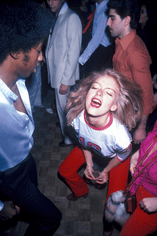 CORY REYNOLDS | DATE 1/1/2026Tonight we’re gonna party like it’s 1977. “Studio 54,” by Waring Abbott, is from D.A.P. Best of 2025 Staff Pick I Hear Music in the Streets, ace photo editor Guillermo M. Ferrando’s cannot-put-it-down street photography collection, published by La Fábrica. Spanning the highly photogenic years 1969 to 1989, and touching down in every borough of the city, from the Bronx to Staten Island, this is a love letter to NYC subcultures, to music and to that ineffable, decisive moment in all great street photography. Featuring everyone from Andy Warhol to Susan Meiselas, Nan Goldin and Jamel Shabazz, it’s a book for every New Yorker with an eye or an ear for the people. “New York in the 1970s and 1980s, mythology has it, was a crumbling, crime-ridden, garbage-swamped disaster zone, a hellhole where nobody in their right mind would want to live,” essayist Tim Lawrence writes. “This version of New York history has been repeated so many times it’s become common sense. Yet the photos included in this book depict a city that, far from enduring a catastrophic and humiliating fall, brimmed with humanity, energy, even joy.”
CORY REYNOLDS | DATE 12/25/2025 From our point of view, there really is no better take on the holiday. Published by Eakins Press Foundation in collaboration with the photographer, Lee Friedlander: Christmas collects more than 200 iconic / anti-iconic black-and-white photographs of whatever it is that we Americans collectively do to commemorate the giving season. It’s worth noting that, “while there is critique in these photographs, there is no moral judgment,” publisher Peter Kayafas writes. “While there are anecdotes that may embarrass the viewer, they are not the construct of the photographer so much as they exist in the eye of the beholder. If you can find the high holy celebration of the birth of Jesus Christ manifested here, more power to you. If what you see instead is a revelation of our nation’s essential, quirky visual character, then you’re the audience for this book.” From our point of view, there really is no better take on the holiday. Published by Eakins Press Foundation in collaboration with the photographer, Lee Friedlander: Christmas collects more than 200 iconic / anti-iconic black-and-white photographs of whatever it is that we Americans collectively do to commemorate the giving season. It’s worth noting that, “while there is critique in these photographs, there is no moral judgment,” publisher Peter Kayafas writes. “While there are anecdotes that may embarrass the viewer, they are not the construct of the photographer so much as they exist in the eye of the beholder. If you can find the high holy celebration of the birth of Jesus Christ manifested here, more power to you. If what you see instead is a revelation of our nation’s essential, quirky visual character, then you’re the audience for this book.”
CORY REYNOLDS | DATE 12/16/2025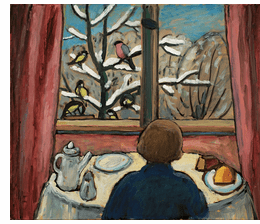 Breakfast of the Birds (Das Frühstück der Vögel) (March 10, 1934) is reproduced from Gabriele Münter: Contours of a World, published to accompany the landmark exhibition on view at Guggenheim Museum through April 2026. Long overlooked in favor of her male counterparts in the Blaue Reiter movement—which she actually cofounded—this major survey places Münter front and center among contemporaries like Wassily Kandinsky, her one-time romantic partner. “Misnomers of ‘naïve’ and ‘natural’ were applied to a practice that astutely interrogated concepts of identity and authenticity, form and color,” exhibition curator Megan Fontanella writes. “In the years 1908 to 1914, the artist’s still-life ‘experiments,’ as she called them, distinguished her production and helped establish Münter’s public identity. She reimagined the still life—historically characterized as among the so-called lesser academic pursuits—and, with her acute gaze, unlocked its potential for radical originality. In doing so, Münter challenged perceptions of both the genre and the capabilities of women artists with compositions that at once empower and disarm the viewer, transforming the ordinary into the remarkable.” Breakfast of the Birds (Das Frühstück der Vögel) (March 10, 1934) is reproduced from Gabriele Münter: Contours of a World, published to accompany the landmark exhibition on view at Guggenheim Museum through April 2026. Long overlooked in favor of her male counterparts in the Blaue Reiter movement—which she actually cofounded—this major survey places Münter front and center among contemporaries like Wassily Kandinsky, her one-time romantic partner. “Misnomers of ‘naïve’ and ‘natural’ were applied to a practice that astutely interrogated concepts of identity and authenticity, form and color,” exhibition curator Megan Fontanella writes. “In the years 1908 to 1914, the artist’s still-life ‘experiments,’ as she called them, distinguished her production and helped establish Münter’s public identity. She reimagined the still life—historically characterized as among the so-called lesser academic pursuits—and, with her acute gaze, unlocked its potential for radical originality. In doing so, Münter challenged perceptions of both the genre and the capabilities of women artists with compositions that at once empower and disarm the viewer, transforming the ordinary into the remarkable.”
 CORY REYNOLDS | DATE 12/11/2025Thursday, December 11, at 7 PM EST, 192 Books presents Raymond Foye and Peter Gizzi discussing The Song Cave's 50th Anniversary Edition of John Wiener’s 'Behind the State Capitol: Or Cincinnati Pike,' considered by many to be Wiener's poetical masterpiece.
CORY REYNOLDS | DATE 12/9/2025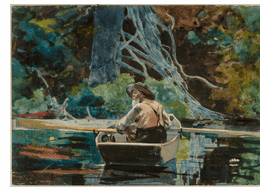 New from MFA Publications, Winslow Homer in Watercolor is published to accompany MFA Boston’s landmark exhibition of the artist’s works on paper—on view for the first time in half a century due to their inherent light sensitivity. Renowned for their immediacy, experimentation and astonishing ability to capture ephemeral qualities like light, water current and air, Homer’s watercolors are considered among the best in American art history. Featured here, “The Adirondack Guide” (1894). New from MFA Publications, Winslow Homer in Watercolor is published to accompany MFA Boston’s landmark exhibition of the artist’s works on paper—on view for the first time in half a century due to their inherent light sensitivity. Renowned for their immediacy, experimentation and astonishing ability to capture ephemeral qualities like light, water current and air, Homer’s watercolors are considered among the best in American art history. Featured here, “The Adirondack Guide” (1894).
CORY REYNOLDS | DATE 12/8/2025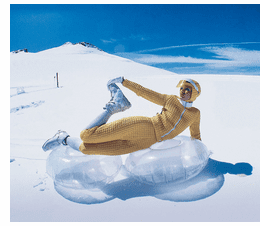 New this week from Marsilio Arte, It’s Snowing! Fashion, Art, Design and Winter Sports is a pure, wintry delight for ski and fashion lovers alike. From seventeenth-century Delft tiles decorated with images of early ice skaters to 2025 wool apres-ski ensembles by the Milanese knitwear brand Sartoria Vico, this playful yet scholarly compendium collects 350 iconic images that tell the history of winter sports fashion. Pictured here, a photograph from Arnaud de Rosnay’s winter fashion feature for the November 1968 issue of Vogue. The model is wearing quilted trousers and a jacket with hood, all by Michèle Rosier pour V de V, and goggles by Bernard Kayman. Comes with folded poster inside the book. New this week from Marsilio Arte, It’s Snowing! Fashion, Art, Design and Winter Sports is a pure, wintry delight for ski and fashion lovers alike. From seventeenth-century Delft tiles decorated with images of early ice skaters to 2025 wool apres-ski ensembles by the Milanese knitwear brand Sartoria Vico, this playful yet scholarly compendium collects 350 iconic images that tell the history of winter sports fashion. Pictured here, a photograph from Arnaud de Rosnay’s winter fashion feature for the November 1968 issue of Vogue. The model is wearing quilted trousers and a jacket with hood, all by Michèle Rosier pour V de V, and goggles by Bernard Kayman. Comes with folded poster inside the book.
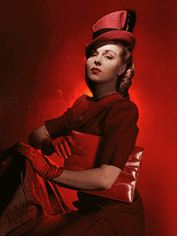 CORY REYNOLDS | DATE 12/3/2025Cecil Beaton’s “The Second Age of Beauty is Glamour,” shot for the February 1946 issue of British Vogue, is reproduced from Holiday Gift Staff Pick Cecil Beaton’s Fashionable World—published to accompany the exhibition on view through January 2026 at the National Portrait Gallery, London. A beautifully produced monograph featuring portraits, magazine editorials, fashion photography, war reportage and illustrations by Britain’s celebrated renaissance man about town, this oversized volume features a lovely Swiss binding, more than 250 color and black-and-white reproductions and a wealth of pithy Beaton quotations that contextualize the images. “My pictures became more and more rococo and surrealist,” he wrote in the third volume of his diary, The Happy Years, published in 1972. “Society women as well as mannequins were photographed in the most flamboyant poses, in ecstatic or mystical states, sometimes with the melodramatic air of a Lady Macbeth caught up in a cocoon of tulle…”
 LACY SOTO | DATE 11/30/2025Sunday, November 30, from 3–5 PM, Artbook at Hauser & Wirth Los Angeles presents author, designer and educator Kelli Anderson in conversation with Claire L. Evans for the launch of the remarkable pop-up book 'Alphabet in Motion: How Letters Get Their Shape,' published by Katherine Small Gallery.
CORY REYNOLDS | DATE 11/27/2025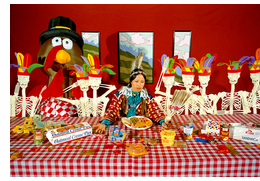 “The Last Thanks” (2006) is reproduced from Wendy Red Star: Her Dreams Are True, published to accompany the exhibition on view now at The Trout Gallery at Dickinson College in Carlisle, Pennsylvania. “Red Star’s living body disrupts the settler-colonial gaze by refusing both disappearance and static representation,” Darren Edward Lone Fight writes; “instead, she occupies the ceremonial center with deliberate presence, her traditional regalia not a costume but a declaration of cultural continuity. … By placing herself at the center, alive, solemn and unflinching, she reclaims the visual field, an act of sovereignty that insists upon the living continuity of Indigenous presence, even in a space overrun by the plastic monuments of settler mythmaking.” “The Last Thanks” (2006) is reproduced from Wendy Red Star: Her Dreams Are True, published to accompany the exhibition on view now at The Trout Gallery at Dickinson College in Carlisle, Pennsylvania. “Red Star’s living body disrupts the settler-colonial gaze by refusing both disappearance and static representation,” Darren Edward Lone Fight writes; “instead, she occupies the ceremonial center with deliberate presence, her traditional regalia not a costume but a declaration of cultural continuity. … By placing herself at the center, alive, solemn and unflinching, she reclaims the visual field, an act of sovereignty that insists upon the living continuity of Indigenous presence, even in a space overrun by the plastic monuments of settler mythmaking.”
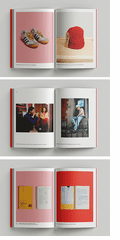 CORY REYNOLDS | DATE 11/22/2025Wes Anderson: The Archives—the first major museum retrospective of the iconic American filmmaker’s output—is on view now at The Design Museum in London, and we are thrilled to distribute the catalog, a new release this week. Drawn from Anderson’s personal archive, amassed over thirty years of groundbreaking films known for their inimitable aesthetic and sense of humor, this exhibition contains everything from props, sets and costumes to notebooks, drawings, Polaroids and paintings. Featuring contributions from more than a dozen of Anderson’s collaborators, including Scarlett Johansson, Tilda Swinton, Roman Coppola and Jason Schwartzman, it is the first book to be produced in close partnership with Anderson. Pictured here, Steve Zissou’s Adidas shoes and red hat from The Life Aquatic with Steve Zissou (2004); photographs by James Hamilton of Anderson, Anjelica Huston and Owen Wilson on the set of The Royal Tenenbaums (2001); and Anderson’s notebooks from Moonrise Kingdom (2012) and The French Dispatch (2021).
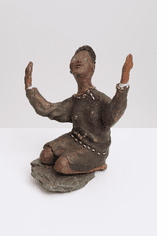 CORY REYNOLDS | DATE 11/20/2025“When I first handled clay … I can’t explain it. It might have felt like someone who was holding their baby for the first time. Immediately, something happened to me. I don’t know why I’m making what I’m making … I have no clue. I don’t know what it’s going to be.” So said the sculptor, activist and Church of the Open Door minister Reverend Joyce McDonald in 2024. A former performer and addict who tested positive for H.I.V. in 1995, the Reverend Joyce McDonald now counsels women in prison and shelters, while exposing and unearthing her own traumas and triumphs in clay. Her work is the subject of a major exhibition at the Bronx Museum, on view through January 11, 2026. Pictured here, one of several figures titled Halleluya Ladies (1998).
 CORY REYNOLDS | DATE 11/18/2025Some books, you flip through and you know immediately what they are. Others, you flip, you stop, you read, you look. You start over, emotions rising. You remember the most poetic moments in your own life. You remember fascination, infatuation, love, young friendship. Then also complexity, distance, yearning. Paul Thek and Peter Hujar: Stay away from nothing, releasing this week from Primary Information, is a book that sparks all of these deep feelings of future and past. Collecting contact sheets and photographs—both candid and composed—by Hujar alongside previously unpublished letters, postcards, drawings and items of ephemera by Thek, this deeply moving book presents a record of friendship, romance and creation across decades and continents. In his Afterward, Andrew Durban describes the years when both men were undertaking tremendous artistic leaps, “often in orbit of one another. Thek became a celebrated—if virtually unsellable—artist, and Hujar established himself in commercial photography. On his way to becoming one of the greatest portrait artists of all time, Hujar often photographed Thek, using him as a kind of testing ground for ideas.… His pictures captured the man who was his friend, lover, and brother, as well as Thek’s art. …Tender and introspective, these photographs are the most substantial documentation of a work now lost.” Conversely, “Thek regarded Hujar as more than a correspondent—he was a kind of sounding board. In his letters to Hujar, Thek hashed out ideas … confessed his deepest feelings about his work and state of mind. For a while, Thek craved any word from Hujar; a letter from him, especially when Thek was living abroad, grounded him. ‘You are a good strong brother,’ he wrote to Hujar, ‘and I take you with me wherever I go.’”
 CORY REYNOLDS | DATE 11/17/2025Tuesday, November 18 at 7 PM, the Strand Book Store presents graphic designer, educator and author Kelli Anderson, discussing her new pop-up typography book 'Alphabet in Motion.' Joining Kelli in conversation is information designer Giorgia Lupi.
 SKUTA HELGASON | DATE 11/15/2025Saturday, November 15, from 4—6 PM, Artbook @ MoMA PS1 Bookstore presents the launch of 'The Cory Arcangel Hack: Digital Culture and Aesthetic Practice' by Eivind Røssaak. Cory Arcangel will perform, alongside a conversation between Arcangel, Røssaak and Alexander R. Galloway. A Q&A will be followed by a signing and refreshments.
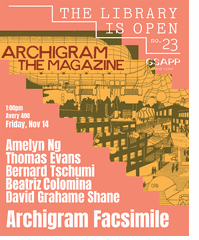 CORY REYNOLDS | DATE 11/14/2025Friday, November 14, at 1PM, Columbia GSAPP presents a special Library is Open panel discussing the new facsimile edition of 'Archigram' magazine published by D.A.P. and Designers & Books, together with Beatriz Colomina (Princeton), Thomas Evans (D.A.P.), Amelyn Ng (GSAPP), David Grahame Shane (GSAPP), and Bernard Tschumi (GSAPP, Bernard Tschumi Architects), who will be in a conversation moderated by Bart-Jan Polman (GSAPP).
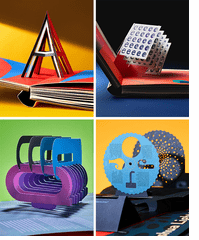 CORY REYNOLDS | DATE 11/13/2025When graphic designer and paper engineer Kelli Anderson came to our offices a few years ago to explain her idea for a 2-volume, 9.5 x 12-inch pop-up book featuring some of the most complex, sculptural, and yet playfully interactive examples of type design ever conceived by persons sane or insane, now or ever, our first thought was: impossible. Second thought: magical; how many can we get? Pictured here, the letter A, along with a description of the letter’s evolution from an ancient Egyptian pictogram dated 3100 BCE; a 3D rendering of Noordzij’s Cube, showing how slight changes affect a single letterform; a mobile-phone-powered projector that allows for undulating variations of the letter J; and interpolated Ps. Along with 13 other pop-ups, this astonishing and equally fascinating publication also features an interactive cover that allows the reader to toggle from the letter A to the letter Z with the satisfying swipe of a single finger.
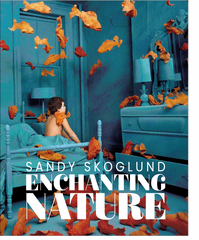 CORY REYNOLDS | DATE 11/12/2025Wednesday, November 12, from 6—8 PM, Rizzoli Bookstore presents a conversation with Sandy Skoglund to celebrate the publication of her new book, 'Enchanting Nature,' a playful and enthralling collection of the artist's signature unconventional dreamlike scenes and images. She will be in conversation with René Paul Barilleaux, followed by a signing.
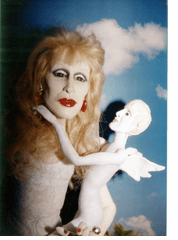 LOGAN YUHAS | DATE 11/7/2025With voluminous hair and an adoring Eros around her neck, the mystique of Candy Darling is rendered in doll form in this enigmatic work by Greer Lankton (1958–1996). Darling is only one of many characters depicted in Greer Lankton: Could It Be Love, the first-ever monograph on this visionary trans artist and a thorough labor of love from publisher Magic Hour Press. Not only fabricated, but photographed, by Lankton herself, the images narrate her community’s fraught relationship with the body, their grotesque forms weaving together autobiographical narratives of disordered eating, depression, drug addiction and AIDS. With garish expressions, irreverent confidence and dark humor, the characters—both famous figures and original creations—tell a visual story of both Lankton’s own psyche and the 1980s East Village scene. Even among that illustrious circle, which included Peter Hujar, David Armstrong and Nan Goldin (who contributes an essay to this book), Lankton was a thrilling artist, who had obsessively perfected her dollmaking skills as an escape into others’ lives since childhood. Hilton Als puts it succinctly in his essay, describing, “her dolls’ attenuated limbs stretching this way and that, and those incredible faces, the manifestation of some dream of femaleness, usually, that reflected Greer’s own ideas about her own femaleness, a hard journey that didn’t make her any happier but gave her herself, a maker of females in her own emotional image.”
|
|
















